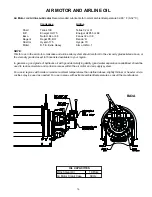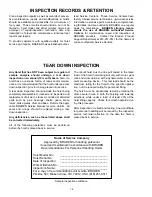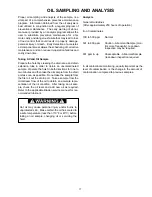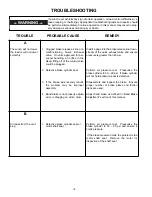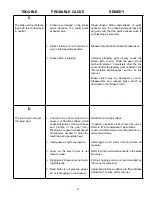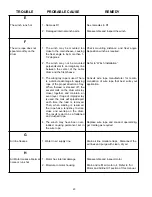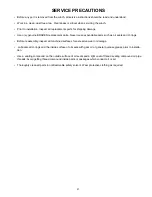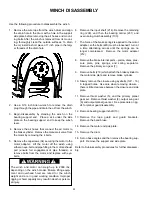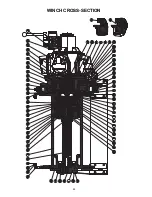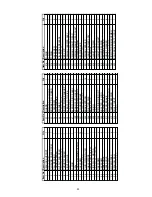
10
*
Warm-up Procedures
A warm-up procedure is recommended at each start-up
and is essential at ambient temperatures below +40°F
(4°C).
The hoist should then be operated without load at low
speeds, forward and reverse, several times to circulate
gear lubricant through the planetary gear sets.
Basic Hoist Operation
The hoist should be positioned so the fleet angle is
between ½ and 1½ degrees. (Refer to “Fleet Angle” in
“Glossary of Terms” earlier in this publication) This would
not apply to a crane or other application having a “point”
sheave.
1. The winch control valve is a spring loaded manual
throttle valve. Viewed from the motor end of the
winch, the valve handle is pulled in the counterclock-
wise direction to hoist and the clockwise direction to
lower. The speed of the winch is controlled by the
degree of lever movement.
2. The hand operated band brake is used as a parking
brake. It should be pulled in the counter clockwise
direction when viewed from the motor end of the
winch to apply the brake.
If the hoist is mounted on a crane or any other device
that has an extendable boom, care must be taken to
pay-out cable as the boom is extended. Failure to pay-
out sufficient cable could result in a “two-blocking” con-
dition that could result in damage to and/or failure of
the hoist, cable, sheaves and/or boom.
HOIST OPERATION
The following warnings and instructions are basic to safe hoist operation. Please read them carefully and follow them
each time your hoist is operated. These instructions are provided in addition to any information furnished by the
Original Equipment Manufacturer. Equipment operators should be completely familiar with the overall operation of the
piece of equipment on which the hoist is mounted (i.e. crane, truck crane, etc.). If you have any questions concern-
ing the safe operation of this hoist or the equipment it is mounted on, contact the equipment manufacturer that installed
the hoist, or the Braden Product Support Department at 918-251-8511, 8:00 am to 16:30 pm CST, Monday through
Friday.
Ground personnel must stay in view of the operator and
clear of the load and hoist drum at all times. Do not
allow personnel near the hoist line under tension. Do
not allow personnel near the hoist drum while the hoist
is in operation. Do not allow personnel to be in line with
the load. Do not allow personnel to stand under a sus-
pended load. A safe distance of at least 1½ times the
working length of the cable should be maintained by
ground personnel. A broken cable and/or lost load may
cause personal injury, death, or property damage.
Failure to use the proper type and viscosity of planetary
gear oil may contribute to intermittent brake clutch slip-
page which could result in severe personal injury,
death, or property damage . Some gear lubricants con-
tain large amounts of EP (extreme pressure) and anti-
friction additives which may contribute to brake slip-
page and damage to brake friction discs or seals. Oil
viscosity with regard to ambient temperature is also
critical to reliable brake operation. Our tests indicate
that excessively heavy or thick gear oil may contribute
to intermittent brake slippage. Make certain that the
gear oil viscosity used in your hoist is correct for your
prevailing ambient temperature.
VIEW
The winch should not be operated if the internal disc
brake is not holding the load - it must be taken out of
service and repaired.
Summary of Contents for BRADEN BA3A
Page 2: ......
Page 25: ...23 THIS PAGE INTENTIONALLY LEFT BLANK...
Page 26: ...24 WINCH CROSS SECTION...
Page 35: ...33...
Page 37: ......

















